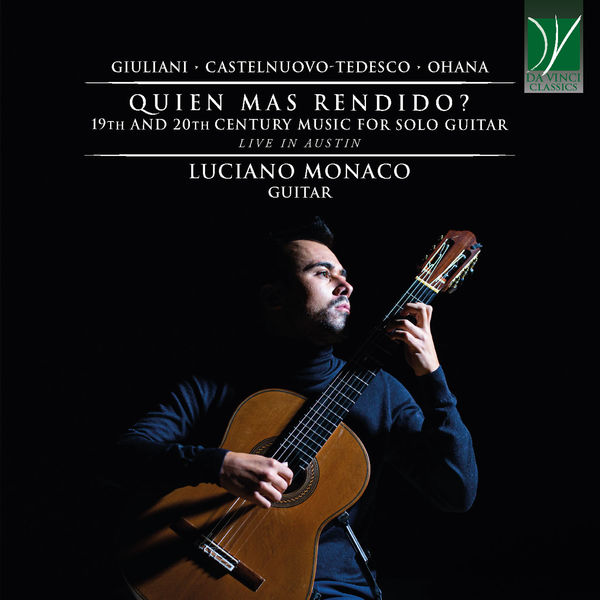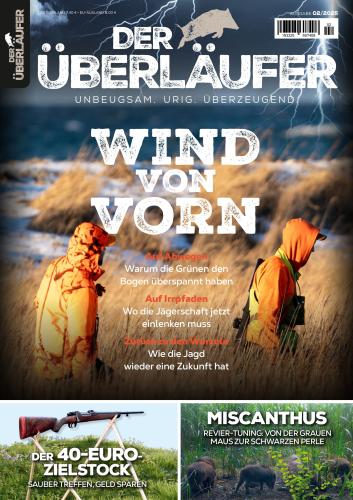
Luciano Monaco – Quien Mas Rendido (2021)
FLAC (tracks) 24bit/44,1kHz | Time – 00:42:56 minutes | 347 MB | Genre: Classical
Studio Masters, Official Digital Download | Front Cover | © Da Vinci Classics
This Da Vinci Classics album offers a complex and multifaceted perspective on the potential of the guitar as a solo instrument, displaying its full palette ranging from virtuosity to expressivity, from compelling storytelling to the clean lines of classical forms.
The three composers recorded here are among the best-known musicians who wrote for the guitar, and they represent three distinct viewpoints on the instrument, on its capabilities and on its resources.
Mauro Giuliani published his Sonata op. 15 very soon after his arrival in Vienna from Italy, in 1808. It is not an overstatement to say that this publication proved to be revolutionary both for Giuliani himself and for the world of the guitar. By issuing this masterpiece, Giuliani publicly demonstrated his value as a “serious” composer, rooted in the classical tradition, as well as his innovative skill and technique as a guitar player. But, even more importantly, he also claimed for his instrument a standing on the same footing as the piano or the violin. The guitar could no more be considered as an instrument on which serenades and accompaniments had to be played, but rather as a complete instrument, capable of interpreting the most lyrical tunes and the most effective virtuoso passages. It could also sustain the complex narrative of the Sonata form: based on the opposition of contrasting themes, this genre requires (from both the instrument and its player) the ability to characterize efficaciously some markedly different musical profiles. To claim this capability for the guitar was almost unprecedented; yet, Giuliani managed to show, clearly and unmistakably, that the guitar could do this in an artistically complete fashion.
The work was published by the “Imprimerie Chimique” in July 1808. It was dedicated to an aristocratic lady, Madame de Maillard; shortly after, the work was reprinted by another publisher, i.e. Steiner and Company. This double publication impacted heavily on the history of the work’s transmission. The Steiner edition is more elegant, clear, and seemingly more reliable; however, it also contains variants which were probably inserted unbeknownst by the composer – in particular as concerns the notation of embellishments. Another disputed field is that of dynamics, since the Steiner edition tends to downplay the starkly contrasting indications found in the “Imprimerie Chimique” version. Whilst scholars are still debating on the evaluation of the sources, it seems safe to state that the clear-cut dynamics of the earlier versions might reflect more faithfully Giuliani’s own highly expressive and effectful performance practice.
This Sonata is therefore one of the relatively few major works in the Sonata form written specifically for the guitar alone in the Classical and pre-Romantic era. The first movement fully deserves the label of “Allegro spiritoso” by which Giuliani indicated it. Its brilliancy, humour and spirited pace are beautifully matched by Giuliani’s perfect command of the guitar timbre and of the fabric of the musical texture. The principal theme requires the guitar to act both as a “singing” and as an “accompanying” instrument; the result is very effective and justifies Giuliani’s claim that the guitar could and should become a solo instrument. The “singing” aspect of the melody is underpinned by Giuliani’s distinctive and careful use of articulation and slurring, emphasising the direction and tension of the melodic lines. In the development, the passage to the minor mode infuses the musical structure with a darker connotation, and the climaxes built through the ascending arpeggios are dramatically very effective, enhancing the tension in order to introduce the recapitulation.
In the second movement, the guitar’s lyrical vocation comes to the fore; in this beautiful “Adagio con espressione” the performer is required to make the guitar sing in the same fashion as the voice or the violin, in spite of its plucked strings. Once more, the breadth of the melodic lines is not interrupted, but rather sustained and given shape through Giuliani’s expert and skillful use of articulation. The delicate ornamentation and the interesting rhythmic modifications add a graceful touch to this beautiful movement, whose value is further enhanced by its thematic connection with the first movement. Giuliani thus builds a very compact and tight Sonata, with cross-references underpinning its masterful construction.
By way of contrast, the third movement is purposefully uncomplicated from the musical viewpoint, whilst it provides some interesting challenges as concerns virtuosity and brilliancy. In spite of the seeming simplicity of its structure, however, Giuliani manages to surprise the listener with some unexpected silences and moments when the dynamics drop suddenly. Paradoxically, this “absence” of music is the best conclusion for this magnificent work, in which the guitar is turned into a miniature orchestra and where its dynamic and timbral palette is fully explored.
If Giuliani’s Sonata was intended as an artistic reply to the Classical Sonata, Mario Castelnuovo Tedesco’s 24 Caprichos de Goya op. 195 unavoidably remind the listener of Paganini’s 24 Capricci. However, as the title reveals, the most direct reference is not to the musical Capricci by the great Italian violinist, but rather to the twenty-four xylographs by the famous Spanish painter and engraver Francisco Goya y Lucientes (1746-1828). Written between January 25th and March 18th, 1961, and dedicated to Lorenzo Castelnuovo Tedesco, this series of short works has been long neglected by many guitarists, but is fortunately enjoying the success it deserves. Goya’s masterpieces are violently sarcastic and powerfully caustic. Many of Castelnuovo Tedesco’s pieces display similar qualities, for example in his parody of dodecaphonic and serialist music. References to real people are also present, although delicately hidden; for example, a mixture of irony and esteem is found in the portrait of the composer’s teacher, Pizzetti, or in the likely allusion to Segovia.
The thirteenth Capricho by Goya originally depicted the encounter between a wooing dandy and a female passer-by, observed by her friends. The man’s frivolity is echoed in Castelnuovo Tedesco’s music through the ancient dance called Rigaudon, normally associated with courtship, whilst his entreating words are mirrored by the central section, more sentimental and intense.
The Classical era evoked by the Rigaudon is found in its actual shape in another work by Giuliani recorded here. His Grand Overture is a magnificent composition, which one could describe as both Italian and Italianate at the same time. Once more, Giuliani reveals himself to be a master of the form, which he skillfully balances with the needs of a virtuoso performer as he was. Along with form and virtuosity, however, a third element stands out, i.e. his capability to employ the topoi of Classicism (such as the French rhythm, the Alberti bass, or the allusions to hunting or to operatic vocality) in a tightly-knitted and compelling fashion.
Once more, the past is seen through the lenses of modernity in Maurice Ohana’s Tiento. Ohana is a standalone in the guitar panorama; his multiethnic and international origins and biography are mirrored in the utter variety and creativity of his own very personal language. Tiento is a rarity within Ohana’s rich output of guitar music, because most of his other works were conceived for the ten-stringed guitar played by Narciso Yepes, one of the greatest guitarists of the era and a favourite interpreter of Ohana’s works. The piece’s name alludes to the Baroque tientos, i.e. the Spanish name for the Toccata (but tientos were less virtuosic and more expressive than their Italian counterparts). The modern version realized by Ohana in 1957 looks back to the past (for example thanks to its quotes from the Folias theme), but is also extremely innovative in its provocative mixture of traditional rhythms (such as those of the habanera), of explicit homages (as in the case of Manuel de Falla) and of Ohana’s own very personal style.
Another early dance and musical form, the passacaglia, is evoked in another of Mario Castelnuovo Tedesco’s pieces, his Passacaglia op. 180 dedicated to Andrés Segovia but intended as a homage to Roncalli. Segovia had been the inspirer of the composition, which he had practically commissioned to Castelnuovo Tedesco. In 1956, Segovia had written a telegram to the composer requesting him to write a Passacaglia, which he did within days. In turn, Castelnuovo Tedesco was curious to know what had prompted Segovia’s request, and the famous guitarist’s reply was both surprising and candid: Segovia had been perusing another Passacaglia, badly written by another musician, and wished a good one to be created by Castelnuovo Tedesco!
As is customary with Passacaglie, this one is also structured as a series of variations built (albeit non rigorously) on a bass. The composer creates a point of distension towards the golden section of the work (at Variation no. 10), which is surrounded by dense textures and a thick musical fabric, culminating in the Fugue and concluding climax.
Still another kind of dance, the popular Tarantella, is represented in the last piece of this album, dedicated once more to Segovia. Castelnuovo Tedesco was fascinated by the rich Neapolitan musical tradition, which he had already celebrated in 1924 in a piano Suite much loved by Walter Gieseking. The same fate awaited the Tarantella, which quickly became one of his best-known works, thanks to its stupendous balance of the virtuosic and of the melodic elements. Its allusions to Neapolitan folklore are not mere postcards, however; the melodic vein of Southern Italy is elaborated by the composer in a very personal fashion, producing a refined and exhilarating composition.
Together, these works allow us to travel in space and in time, discovering the different languages of these three great composers, seeing the past with their eyes, and enjoying the beauty of their absolute masterpieces.
Tracklist:
1. Sonata in C Major, Op. 15: I. Allegro Spiritoso (Live) (06:03)
2. Sonata in C Major, Op. 15: II. Adagio (Live) (05:02)
3. Sonata in C Major, Op. 15: III. Allegro Vivace (Live) (04:24)
4. 24 Caprichos de Goya – Cuaderno Tercero, Op. 195: No. 13, Quién mas rendido? (Live) (02:38)
5. Grande Overture, Op. 61 (Live) (08:02)
6. Tiento (Live) (03:52)
7. Passacaglia, Op. 180 (Live) (08:39)
8. Tarantella, Op. 87a (Live) (04:16)
Download:



















